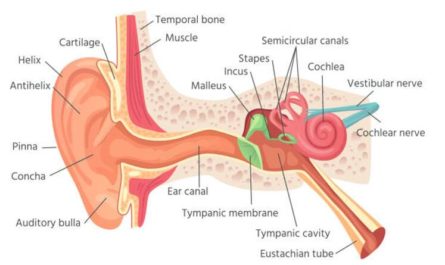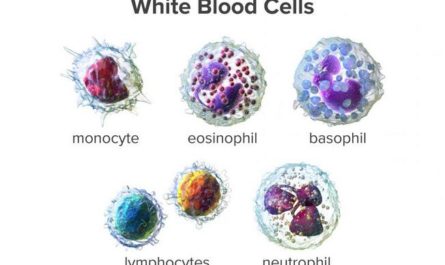Have you ever noticed a change in the color of your fingernails? While it’s common for nails to have slight variations in color or texture, a dramatic change can sometimes be a sign of an underlying health condition. One such change is the development of white fingernails. In some cases, particularly when the nails are almost entirely white, this can be a sign of liver disease. This article will take an in-depth look at the connection between white fingernails and liver disease. We will also explore the causes, symptoms, and treatment options.
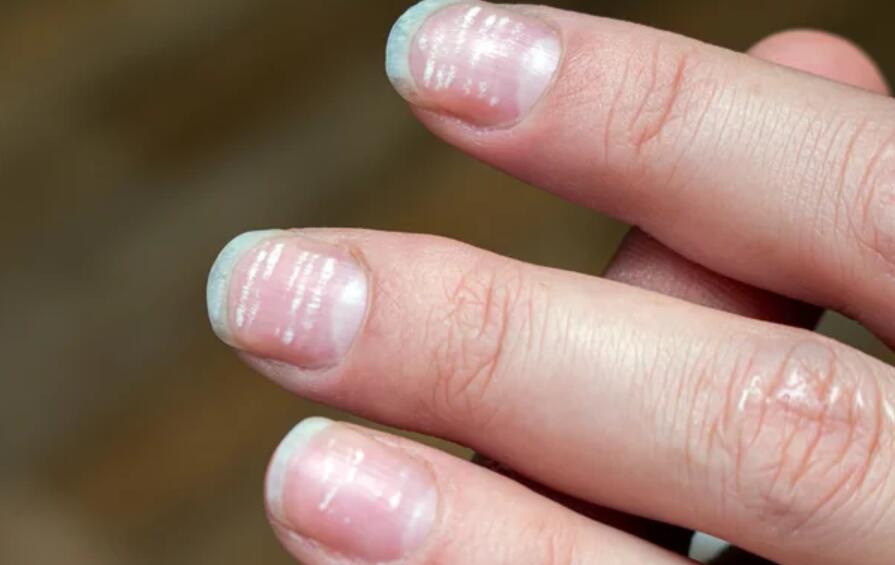
What are Terry’s Nails?
The specific condition linking white nails with liver disease is known as Terry’s nails, named after Dr. Richard Terry, who first described the condition in the 1950s. In his study, Dr. Terry found that 82 out of 100 patients with cirrhosis (severe liver scarring) had developed white nails.
Terry’s nails are characterized by a nearly complete whitening of the nail plate, except for a narrow band of normal, pink nail bed at the tip of the nail. The nails take on a ground glass-like appearance, and the lunula (the typically white, half-moon shape at the base of the nail) is obliterated.
While Terry’s nails can sometimes occur as a normal part of aging, they are most commonly associated with severe liver disease, particularly cirrhosis. However, the condition has also been linked to other health issues.
Connection Between Liver Disease and White Nails
The exact mechanism behind the development of Terry’s nails in liver disease is not fully understood. However, experts believe it may be related to complex changes in the blood vessels and connective tissue in the nail bed. To understand this connection, it’s important to first understand the role of the liver and the impact of liver disease on the body.
The liver is a vital organ that plays a crucial role in many bodily functions, including filtering toxins, producing bile for digestion, and regulating blood clotting and glucose metabolism.
In cirrhosis and other advanced liver diseases, the liver becomes severely scarred and is unable to function properly. This can lead to a host of serious complications, including changes in hormone levels, nutrient deficiencies, and alterations in blood flow throughout the body.
It’s thought that these systemic changes associated with liver disease may affect the tiny blood vessels and tissues in the nail bed. This leads to the characteristic whitening seen in Terry’s nails.
Other Common Causes of White Nails
While Terry’s nails are most strongly associated with liver disease, there are several other potential causes of white nails that are important to be aware of. These include:
1. Nail Injury or Trauma
One of the most common causes of white spots on nails is simple injury or trauma to the nail bed. This can happen from everyday activities like accidentally bumping your finger, or slamming a door on your nail.
These types of injuries can cause the nail plate to temporarily separate from the underlying nail bed, leading to an area of white discoloration known as true leukonychia. As the nail grows out, the white spots will gradually move upward and eventually disappear when you trim your nails.
To prevent trauma-related leukonychia, try to be mindful of protecting your nails during activities that put them at risk. Wearing gloves for household chores and being careful when closing doors can all help minimize accidental nail injuries.
2. Allergic Reaction to Nail Products
If you frequently get manicures or use nail products like polish, hardeners, or artificial nails, you may develop white spots. The chemicals in these products, such as formaldehyde or tosylamide, can cause contact dermatitis in some people.
Allergic reactions to nail products can cause the nails to become brittle, pitted, or discolored. You may also experience redness, itching, and swelling of the skin around the nails.
If you suspect that your white nails are due to an allergy, try taking a break from using any nail products for a few weeks. You can also ask your dermatologist about patch testing to identify the specific ingredient you’re allergic to.
3. Fungal Nail Infection
White superficial onychomycosis is a type of fungal infection that can cause small white spots to appear on the surface of the nails. The infection occurs when fungus penetrates the top layer of the nail plate and begins to grow. This can lead to the characteristic white patches.
As the infection progresses, the white spots may merge and involve a larger portion of the nail. The nail can also become thickened, brittle, and prone to crumbling or separating from the nail bed.
Fungal nail infections are more common on toenails than fingernails, but they can affect any nail. Risk factors include older age, poor circulation, and frequent exposure to damp environments like swimming pools or locker rooms.
Treatment for fungal nails typically involves oral antifungal medications. In some cases, medicated nail lacquers or topical antifungal creams may be used in combination with oral drugs.
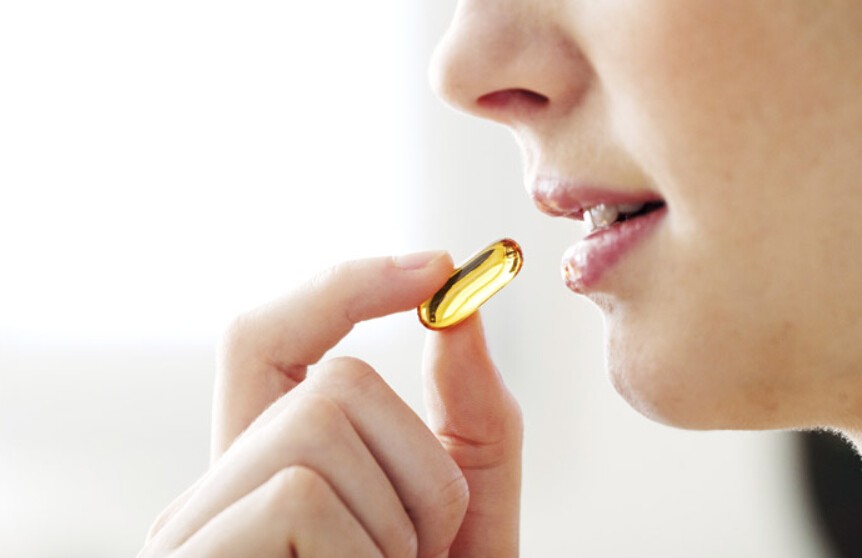
4. Mineral Deficiencies
Some studies have suggested that white nails may be a sign of deficiencies in certain minerals, particularly calcium and zinc. These deficiencies are thought to interfere with proper nail growth and maintenance. This can lead to changes in nail color and texture.
If you’re concerned about mineral deficiencies, the best approach is to eat a well-balanced diet. This includes plenty of nutrient-rich foods like leafy greens, nuts, seeds, and lean proteins. If you have severe or persistent white nails, it’s a good idea to see your doctor to rule out any underlying health problems.
5. Systemic Diseases
In some cases, white nails can be a sign of an underlying systemic disease that affects multiple organs and tissues throughout the body. Here are a few examples:
- Kidney Failure: Chronic kidney disease can lead to half-and-half nails (Lindsay’s nails). Where the proximal half of the nail is white and the distal half is pink or brown.
- Congestive Heart Failure: Fluid retention and poor circulation associated with heart failure can cause Terry’s nails or half-and-half nails to develop.
- Diabetes: Uncontrolled diabetes can increase the risk of fungal nail infections. This can lead to white or yellowish discoloration of the nails.
If you have white nails along with other symptoms like fatigue, or swelling in your legs and feet, it’s important to see your doctor. Early diagnosis and treatment of underlying systemic diseases can help prevent complications.
6. Chemotherapy
Certain chemotherapy drugs used to treat cancer, such as cyclophosphamide and vincristine, can cause changes in nail appearance as a side effect. These changes may include white discoloration, horizontal or vertical lines, and brittle or cracked nails.
Chemotherapy-induced nail changes usually develop several weeks after starting treatment. The nails will gradually return to their normal appearance as new, healthy nail tissue grows in.
7. Aging
As we get older, our nails naturally undergo some changes in appearance and texture. One common age-related change is the development of vertical ridges or lines on the nails. This can sometimes be accompanied by white spots or discoloration.
These changes are thought to be due to a gradual decline in the rate of nail growth and the quality of the nail plate over time. They are generally considered a normal part of the aging process.
To keep your nails looking their best as you age, be sure to practice good nail hygiene by keeping them clean, dry, and trimmed. You can also gently buff the surface of the nails to help smooth out any ridges or unevenness.
8. Psoriasis
Psoriasis is a chronic autoimmune condition that primarily affects the skin, but it can also involve the nails in some people. Nail psoriasis can cause a variety of changes in nail appearance. This includes white spots, pitting, thickening, and separation from the nail bed.
In addition to white spots, psoriatic nails may develop red or brown discoloration, especially under the nail plate. The nails may also become brittle and prone to crumbling or breaking.
Treatment for nail psoriasis often involves a combination of topical medications, such as corticosteroids or vitamin D analogs. Light therapy and laser treatments may also be used in some cases.
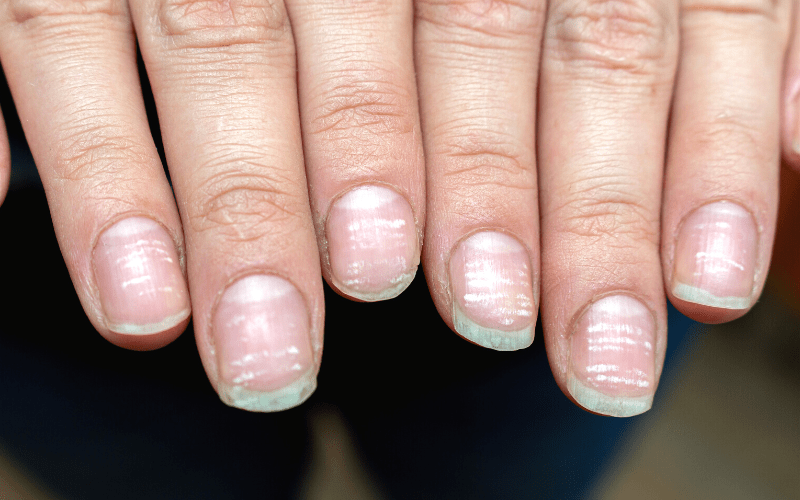
9. Eczema
Eczema, also known as atopic dermatitis, is a chronic inflammatory skin condition that can sometimes affect the nails. Like psoriasis, eczema can cause the nails to become thick, brittle, and discolored, with white spots.
People with eczema may also develop a condition called eczematous dermatitis of the nail fold. This can lead to further nail changes and increase the risk of secondary bacterial or fungal infections.
Treatment for nail eczema typically involves moisturizing the nails and surrounding skin. You can use gentle nail care techniques, and apply topical corticosteroids or other anti-inflammatory medications. In severe cases, systemic medications like immunosuppressants may be necessary.
10. Alopecia Areata
Alopecia areata is an autoimmune condition that causes patchy hair loss on the scalp and other parts of the body. In some cases, it can also affect the nails, causing changes like white spots, pitting, and roughness.
The exact mechanism behind the nail changes in alopecia areata is not fully understood, but it is thought to be related to the same immune system dysfunction that causes hair loss. The immune system mistakenly attacks the hair follicles and nail matrix, leading to disrupted nail growth and appearance.
Treatment for nail changes in alopecia areata may involve topical or injectable corticosteroids, topical immunotherapy, or systemic medications. In many cases, the nail abnormalities will improve or resolve on their own.
11. Malnutrition
Severe malnutrition, particularly protein-energy malnutrition, can cause a range of nail changes including white discoloration, brittleness, and slowed growth. This is because the nails require adequate nutrition, especially protein, to grow and maintain their normal structure and appearance.
Malnutrition-related nail changes are more common in developing countries where access to adequate food and nutrition may be limited. They can also occur in people with eating disorders, malabsorption syndromes, or other conditions.
Treatment for malnutrition-related nail changes involves addressing the underlying cause and providing adequate nutrition. As nutritional status improves, the nails will typically begin to grow and appear more normal over time.
12. Arsenic Poisoning
Chronic exposure to high levels of arsenic, a toxic heavy metal, can cause a range of health problems including skin, lung, and bladder cancer. It can also lead to characteristic nail changes known as Mees’ lines. These are transverse white bands that run parallel to the lunula (the half-moon shape at the base of the nail).
Arsenic poisoning can occur through contaminated drinking water or ingestion of contaminated food or supplements. It is more common in certain parts of the world where naturally high levels of arsenic are found in the groundwater.
If you suspect that you may have been exposed to arsenic, it’s important to see a doctor right away for testing and treatment.
When to See a Doctor?
If you notice any significant changes in the appearance of your nails, particularly if the nails become predominantly white, it’s important to see a doctor for evaluation. While Terry’s nails themselves are not harmful, they can be an important clue to an underlying health problem that needs to be addressed.
If an underlying condition is found, treatment will focus on managing that condition and preventing complications. In the case of liver disease, this may involve medications, lifestyle changes, and close monitoring by a healthcare team. If caught early, many forms of liver disease can be effectively managed or even reversed with proper treatment.
Conclusion
White fingernails, particularly when they involve nearly the entire nail plate, can be a striking and concerning sight. While this condition is most often associated with severe liver disease, it can also be a sign of other underlying health problems.
If you notice any significant changes in the color or appearance of your nails, it’s important to see a doctor for evaluation. They can help determine the cause of the changes and recommend an appropriate course of treatment.

